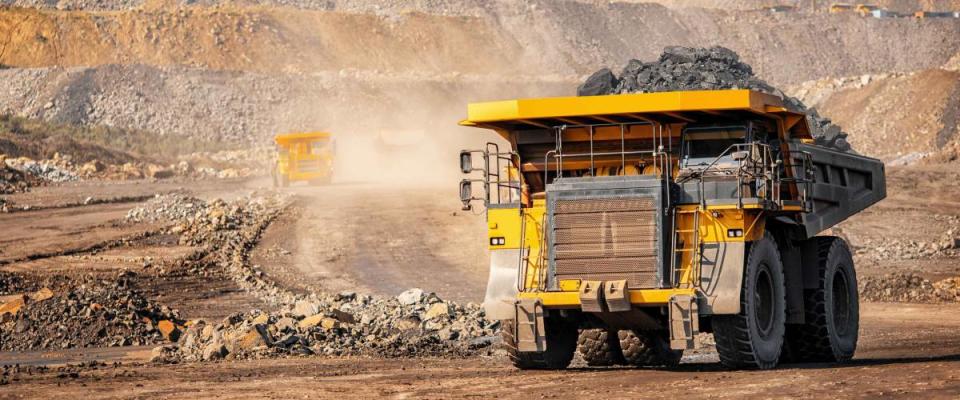Buy coffee, not crypto — why investors are choosing commodities in 2021

Move over, Bitcoin. There’s a new and exciting trade in town: commodities.
Droughts in Brazil are sparking double-digit gains in coffee futures, threatening the price of everyone's daily caffeine fix. And it's not just coffee, as vaccine-driven global growth has prices for many commodities – sugar, oil, gold and more – experiencing a broad-based rally that's made the sector piping hot.
The Invesco DB Commodity Index Tracking Fund — which looks to achieve diversified commodity exposure — is up 56% over the past year alone.
And the strong performance in commodities is drawing the attention of retail investors looking to get in on the action.
But before you jump in head first, it’s important to at least know the basics. Commodities trading is a different beast than stocks, with a unique risk versus reward profile, so an extra layer of due diligence is required.
What is commodities investing?

Commodities are the raw materials at the foundation of everyday life: Things that can be mined, drilled or grown and then used to produce the goods we use.
Whether we’re sipping coffee, putting on a new T-shirt or pumping gas into our cars, commodities make it all possible. Which means people’s day-to-day consumption habits have a significant impact on the prices of commodities.
From an investor’s perspective, commodities trading is simply the act of buying and selling these raw materials to either earn a profit or hedge risk.
There are four main types of commodities:
Agricultural products: These soft commodities are grown and include products such as cocoa, coffee, cotton, sugar, corn, wheat and fruit.
Livestock and meat: Soft commodities that are ranched and include products such as live cattle, chickens, pork bellies and milk.
Energy products: Hard commodities that are drilled or mined and include things like oil, coal, natural gas, ethanol and electricity.
Metals: Hard commodities that are mined and include both precious metals (like gold and silver) and base metals (like copper, aluminum and zinc).
Why invest in commodities?

While investors are always hunting for bigger returns, there are other good reasons to invest in commodities:
Reason No. 1: Diversification
Diversification is probably the single best reason to add commodities to your portfolio.
Why? Because commodities tend to have very little correlation with more traditional asset classes.
Historical trading patterns have shown stocks and bonds tend to move in tandem with each other. That can make it difficult to guard against a downturn if those are the only groups you’re invested in.
But it’s different with commodities.
Commodities are primarily influenced by the supply and demand dynamics occurring in their individual markets. Variations in demand for oil or copper or cotton will often have a greater impact on their prices than an overall market direction.
That means commodities don’t necessarily move in lockstep with other financial assets; and in many cases, they can move in the opposite direction of stocks and bonds.
So, allocating a portion of your portfolio to commodities can give you a cushion of protection against a decline on Wall Street.
Reason #2: Inflation Hedge
Investing in commodities remains one of the most reliable ways to guard against the ravages of inflation. That’s because as inflation rises, the price of raw materials increases right along with it.
Legendary investor Warren Buffett recently touched on this phenomenon when discussing his company’s current housing operations.
“The costs are just up, up, up,” he said at Berkshire Hathaway’s annual shareholders’ meeting. “Steel costs, you know, just every day they’re going up.”
Commodities have historically performed well during periods of high inflation, even as stocks and bonds declined.
How to Invest In Commodities

There are several ways to invest in commodities, including just buying and owning them directly.
If you want to invest in gold, for example, purchasing a few gold coins from a local dealer is easy enough.
The difficulty lies in owning unwieldy commodities like natural gas or livestock. Very few people have the space to store hundreds of barrels of oil or to house a herd of cattle.
Thankfully, there are three practical methods for average investors to invest in commodities.
Commodity ETFs
Commodity exchange-traded funds (ETFs) offer the simplest way to gain exposure without having to directly own the commodity.
Some commodity ETFs let you zero in on a single commodity, while others group them together for broad-based exposure.
For instance, the SPDR Gold Shares ETF is designed to move in lockstep with gold prices, giving you a “pure” way to invest in the yellow metal.
Meanwhile, Invesco’s previously mentioned Commodity Index Tracking Fund provides exposure to 14 of the most heavily traded physical commodities, including crude oil, gasoline, corn, gold and soybeans.
ETFs typically have very low management fees, and you save even more by buying them through a zero-commission investing app.
Commodity stocks
Another easy way to invest in commodities is by owning the companies that produce them.
For instance, energy blue chips like BP, Exxon Mobil and Chevron are a good way to gain exposure to oil and natural gas. Agricultural stocks such as Mosaic and Tyson Foods let you invest in fertilizers and livestock, respectively. Mining giants like BHP, Rio Tinto and Vale all provide access to a wide variety of metals.
And thanks to a new investment platform, you can actually buy stakes in U.S. farms. You'll get a cut from both the leasing fees and crop sales, providing you with a cash income while the value of the asset increases.
A word of caution: Commodity stocks don’t always track their underlying commodities perfectly because other business-specific factors come into play – like the company’s financials, the quality of its management team and its long-term production prospects.
At any given time, any one of those factors can have a greater impact on the stock price than the underlying commodity.
As with ETFs, you can easily invest in commodity stocks through any number of investing apps — although a few will give you a free stock just for signing up.
Commodity futures
Finally, investors can use futures contracts to bet on how a particular commodity’s price will move. Futures involve agreeing to buy or sell a given commodity at a predetermined price and time in the future.
Buyers of futures contracts profit when commodity prices rise. Sellers of futures contracts profit when commodity prices fall.
While futures were designed for major commodity producers to hedge against price volatility, individual investors can get into the game if they have a brokerage account that offers it.
Novice investors should exercise extreme caution with futures contracts due to the high degree of borrowing typically involved. Borrowing large sums, coupled with extreme volatility exhibited by many commodity prices, make futures trading a particularly risky proposition.
Making the call

With inflation continuing to heat up, it doesn’t look as if the rally in commodities will slow anytime soon. Hopping on for the ride, even at these elevated levels, is tempting.
But be sure to remember this: Commodities investing is always a high-risk, high-reward proposition, regardless of when, what and how. Newer investors might prefer a low-stakes alternative, like an app that lets you invest with just your "spare change."
In order to minimize that risk, consider leaning on dividend-paying commodity producers and established commodity ETFs for the vast majority of your exposure — and staying as far away from margin as humanly possible.
